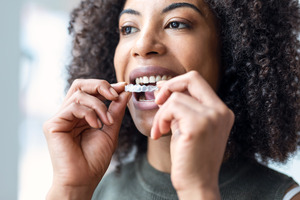
Invisalign is often suggested as an alternative to traditional braces. Plenty of people are aware that it can be used to straighten crooked teeth, but does it have other applications as well? In particular, could it be an option for correcting any bite problems that you might be struggling with? Here’s a closer look at how Invisalign works and whether it can be a viable solution when it comes to misaligned bites.
What Does the Invisalign Process Look Like?
When you undergo Invisalign treatment, you will be given a series of clear plastic aligners. You are meant to wear these aligners over your teeth for about 20 to 22 hours a day, only taking them out to eat or for oral hygiene purposes. The pressure exerted by the aligners will cause the teeth to gradually move toward better positions. Each aligner in the series is meant to be worn for about two weeks before you move on to the next one.
Can Invisalign Help With Bite Problems?
Yes, Invisalign can indeed be used to address problems with your bite, such as the following:
- An overbite, which is when the upper teeth come down too far in front of the lower teeth.
- An underbite, which is when the lower teeth are in front of the upper teeth.
- A crossbite, which is characterized by certain upper teeth sitting inside the lower teeth.
- An open bite, which is when the upper and lower teeth don’t make contact even when your mouth is closed.
Invisalign can be used to move the upper and lower rows of teeth so that they come together as they should, thus solving all the bite problems listed above.
Are You a Candidate for Invisalign?
It’s important to note that Invisalign is not always the right choice for correcting a bad bite. The treatment typically works best for mild to moderate orthodontic problems; more severe issues often call for traditional braces.
If you want to correct your bite and are interested in using Invisalign to do so, your first step should be to set up a consultation with your dentist. They can take a look at your smile in order to determine the type of orthodontic issues you’re suffering from and how complex they are. Then they can help you figure out whether Invisalign is worth pursuing in your case. The sooner you find the right solution to your bite problem, the sooner you can enjoy a better quality of life.
About the Author
Dr. Darren Koch earned his Doctor of Dental Surgery at the University of Buffalo. He belongs to the American Academy of Clear Aligners, which featured one of his Invisalign cases as their Case of the Month. He has used Invisalign to help many patients overcome a variety of bite problems. To schedule a consultation with Dr. Koch at his practice in Cary, visit his website or call (919) 859-6633.






